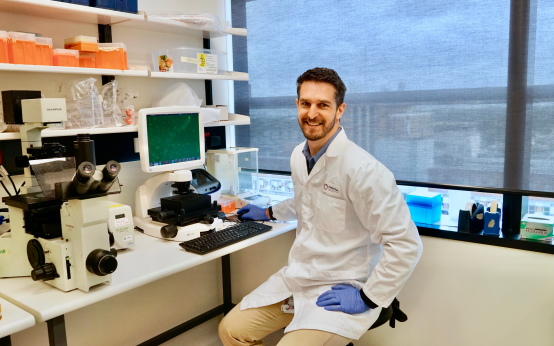News
A new treatment for acute myeloid leukaemia could prove beneficial for even more people
15 September 2022
New research published in Science Advances today conducted by researchers at Peter MacCallum Cancer Centre show a new treatment for two challenging blood cancers could potentially help more patients than originally thought. Associate Professor Nicholas Clemons, Group Leader in the Cancer Evolution and Metastasis Program at Peter Mac, said “Our research highlighted an additional mode of action for the treatment known as eprenetapopt opening up its potential to work in a broader group of acute myeloid leukaemia (AML) and myelodysplastic syndrome (MDS) patients. “The treatment was initially thought to only target patients with the TP53 mutation however we believe it could be beneficial to substantially more patients.” AML is a type of blood cancer known as leukaemia. It is characterised by the bone marrow producing too many immature white blood cells. This stops the marrow from being able to make normal blood cells. Fellow researcher Dr Kenji Fujihara said “We believe this treatment will work well in AML patients that accumulate iron as we uncovered that eprenetapopt triggers a cell death called ferroptosis that is reliant on iron. “This is an exciting development as cancer cells can become resistant to the usual means of cell death know as apoptosis.” Associate Professor Clemons said the treatment is currently undergoing clinical trials and the research discovery will hopefully enable more patients who need new treatment options a chance to beat their cancer. “We’re now also interested in finding out what other cancers outside of AML/MDS might benefit from this new activity of the drug,” he said. Myelodysplastic syndrome changes into acute myeloid leukaemia in approximately 30 per cent of people and in Australia around 900 people are diagnosed with AML each year. Only ten to 15 per cent of AML patients carry the TP53 mutation so opening the treatment to a broader group is very beneficial. Azacitadine is the only approved treatment available for MDS and AML and is successful in achieving a complete remission in 14 per cent and seven percent of patients respectively. The research is published in Science Advances.

